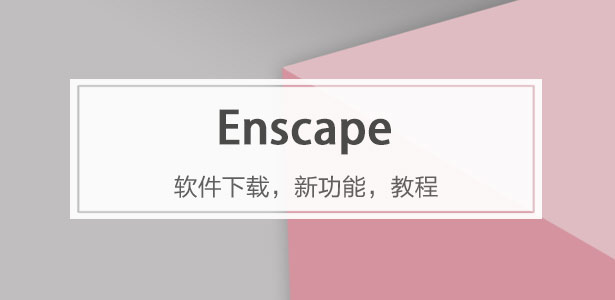
下載app免費領取會員






建筑及室內設計? 左通右達建筑工作室Atelier About Architecture
項目地點? 中國北京
建成年份? 2025年
建筑規模? 600平方米
本文文字由設計單位提供。
M住宅是位于北京東部的一棟多層住宅,整棟建筑被樹蔭包裹,院中草木茂盛,環境自帶著某種特別的氛圍和質感。
House M is a multi-story home located in the eastern part of Beijing nestled among shaded trees and lush vegetation. The environment exudes a unique atmosphere and texture.



住宅主人曾多次描繪記憶深處童年時期對于家宅和居住的印象:低層的樓房,推開窗就是樹梢圍合的綠意;陽光和高大的書架,深色的水磨石的地面,投射在紅磚墻面上搖曳的樹影。這種延續幾代人的圖像記憶,早就沉積成了某種家庭性格,也為這個建筑空間奠定了某種情感與回憶、新與舊交織的氣質。
The homeowner described many times their childhood memories etched deep in mind—the impressions of home and life: low-rise buildings, windows that opened directly onto tree canopies, sunlight and towering bookshelves, dark terrazzo floors, and the flickering shadows of trees dancing on red brick walls. These images, passed down through generations, have become part of the family’s character and have laid an emotional and nostalgic foundation for this architectural space—a tapestry interwoven with both the new and the old.






原有場地的房屋邊界由高墻圍合,中心庭院被高墻圍在其中,四面圍繞的建筑以中庭作為唯一采光來源。房屋近身狹長,開窗洞口有限,室內大部分需要被使用的面積均被困在陰影之下。
The existing site is enclosed by high walls with a central courtyard also surrounded by these walls. The courtyard serves as the only source of light for the surrounding buildings. The rooms are long and narrow with limited windows, leaving much of the interior space left in darkness.
整體策略是建立一個沉潛在高墻下的新空間體系。在豎直方向受到限制的情況下,延展水平方向的層次,開啟5個尺度不一的庭院;大小庭院可觀可游,無論置身何處,不同空間單元之間會產生對望關系。這也觀照到多代人共同生活的日常場景。人們在這些若即若離的房間中穿梭,祖孫滿堂或者核心家庭的互動,都得到響應。
The design seeks to establish a new spatial system submerged beneath the tall enclosing walls. With vertical development constrained, the strategy focuses on horizontal layering by introducing five courtyards of varying scales. These courtyards, both large and small, can be both viewed from afar and physically explored. From any point within the residence, a visual connection is formed between spaces. This echoes the daily life of a multigenerational household. As family members move between these rooms—sometimes close, sometimes apart—their interactions are accommodated and deepened.








空間以各種方式互相連通,區域之間總是故意留出窺視的空隙。人的視線一直在捕捉新的信息,不用身體運動,視線就在漫游中。
The spaces interconnect in myriad ways, with intentional gaps left between zones to allow glimpses across them. The scene continuously shifts, giving new information from one perspective to another even without physical movement.






設計通過變換空間、開窗方向引導光線,營造出可以捕捉場所中自然光全天的連續變化。前院、側院、平臺、天臺、天井,每個層級都串聯了相應的生活功能,由此帶來更豐富的光影體驗。雖然周圍的高墻依然存在,多重院落之間的空間穿透放大了視覺感知的物理尺度,黑暗變成了可以變換的灰度。
By altering spatial configurations, window orientations, and light guidance, the residence captures the changing qualities of natural light throughout the day. The front yard, side yard, terraces, rooftop, and atriums each correspond to different aspects of daily life, collectively offering a rich play of light and shadow. Although the surrounding walls remain, the spatial porosity between courtyards amplifies visual perception, stretching the physical sense of scale. Darkness is transformed into a gradation of shifting grays.






在穿插于庭院間的植物掩映下,花園、房間,乃至頂層天臺,過渡空間被劃分為不同層次,建筑整體空間變得開放和流動,場地因此有了循環體驗的可能。
Under the concealment of interspersed plants, gardens, rooms, and transitional spaces are layered and defined, while the overall architecture remains open and fluid, offering a continuous and cyclical experience across the site.





空間是信息,建筑是現象,材料的張力提供了身體和觸覺的最終體驗。我們把原有建筑經年累月的材料變化分類與聚合,創造出了這個住宅的定制材料;一種具有大顆粒籽石的染色混凝土,以垂直方向制造梯形凹凸,預制成900×2200毫米的整塊混凝土干掛板;屋頂部分使用原色鈦鋅板金屬屋面,連接露臺小粒水磨石整體澆的地面;使用雜石混凝土整體澆筑成可以圍坐的中島,桌子和花臺。這些構筑和材料交織構成了貫穿建筑內外的物理體驗。
At the heart of architectural design is the creation of physical space where our bodies can reside. Space conveys information, architecture manifests as experience, and the tension within materials delivers the final sensory and tactile impressions. By categorizing and synthesizing the natural aging of the original building materials, a customized material for this residence was developed: a pigmented concrete with coarse aggregate, cast into vertically ridged trapezoidal shapes prefabricated as 900x2200 mm dry-hung panels. These panels form a sequential material experience both inside and outside the building.




回望這些內向的空間,在材料和光線的包裹下,氣氛堆疊變得靜謐而堅實。從入口穿梭游弋至屋頂天臺,仿佛也是一場“自由在高處”的精神之旅。體驗空間就好像觀察一個人,起初只是注意其容貌,逐漸了解其為人,慢慢摸清其生活習慣,試著靠近內心世界,直至理解其精神與靈魂。
Looking back at this introspective physical space—enveloped in material and light—the atmosphere becomes serene and solid. The experience is like getting to know a person: we first notice their appearance, then understand their character and habits. We may then venture into their inner thoughts and memories and ultimately connect with their spirit and soul.




感知是自然賦予我們的標尺,去衡量真實性,去體驗趣味,為一切賦予意義。感知讓我們理解并對材料、建造和空間做出恰當的回應。在某種程度上,這個復雜的過程可能就是建造住宅的全部意義——回望每個個體的情感與記憶。
Perception is nature’s metric that allows us to gauge authenticity, experience joy, and assign meaning to all things. It guides our responses to materials, construction, and space. In a way, this complex process is the essence of building a house—a reflection on personal emotion and memory.





設計圖紙 ▽












完整項目信息
項目地點:中國北京
項目類型:建筑、室內、景觀
基本功能:私人住宅
建成年份:2025年
建筑規模:600平方米
建筑及室內設計:左通右達建筑工作室Atelier About Architecture
主持建筑師:王旎
設計團隊:秦瑛、劉曉鑫、姜萬春、董寧、史一紅、克霞
景觀團隊:李昕、劉帥、曹積學、吳紫穎
燈光團隊:Viabizzuno、北京眾信恒瑞照明設計有限公司
結構顧問:馬智剛
施工團隊:智營造裝飾工程有限公司
項目負責人:陶智、徐曉亮
木工:王云、孫保權
機電:鐘杰、彭建清
油工:孫宏旗、楊浩德、唐金飛
磨石工:梁正六、高中慶
瓦工:蘇現坤
攝影:朱雨蒙、孫海霆
版權聲明:本文由左通右達建筑工作室Atelier About Architecture授權發布。歡迎轉發,禁止以有方編輯版本轉載。
投稿郵箱:media@archiposition.com
本文版權歸腿腿教學網及原創作者所有,未經授權,謝絕轉載。

上一篇:BIM建筑|唯想國際新作:天津鐘書閣,40萬塊磚重塑古典
下一篇:BIM建筑|SpActrum譜觀新作:材料是演員,889GLO藝術空間






推薦專題



































